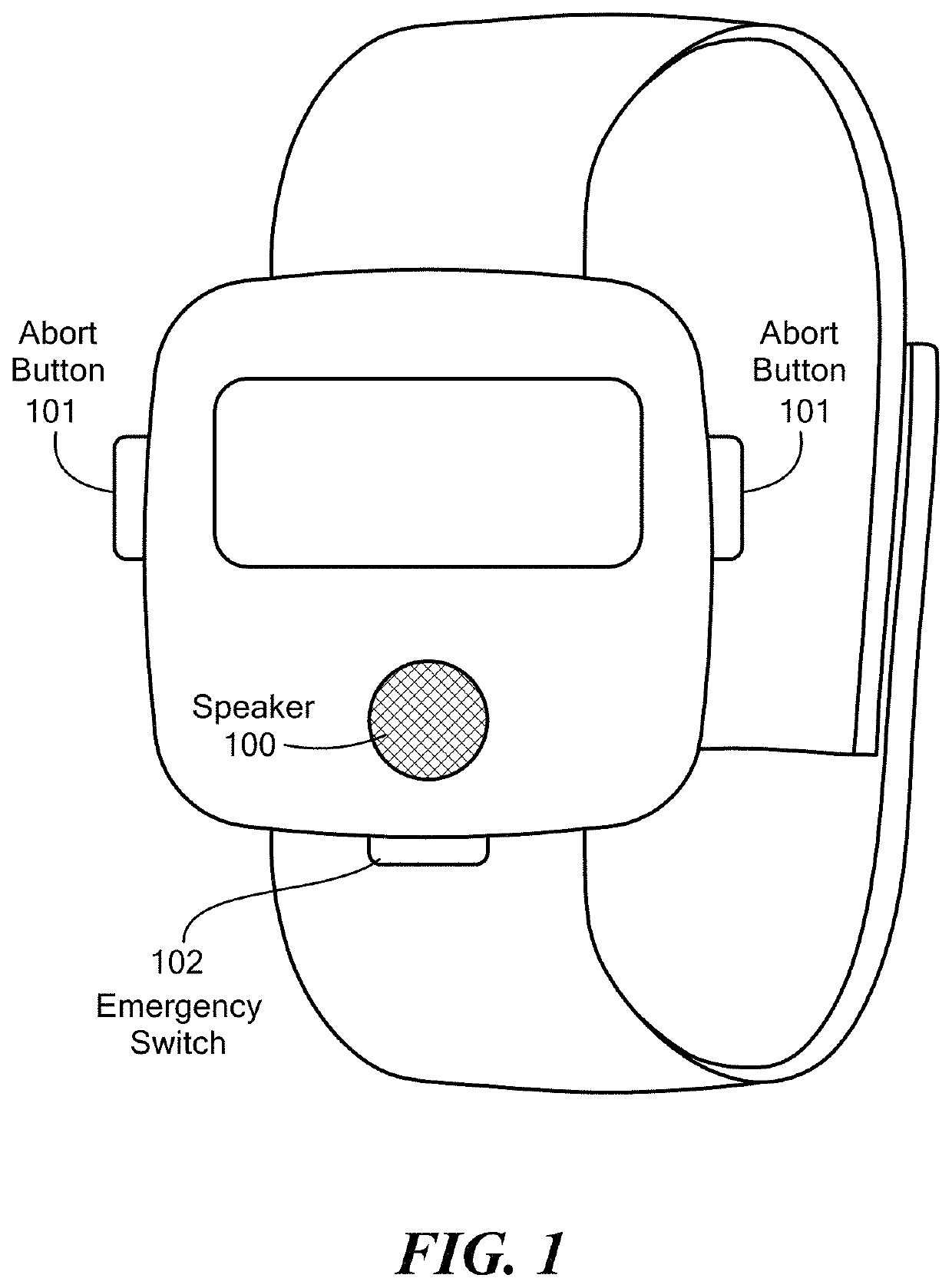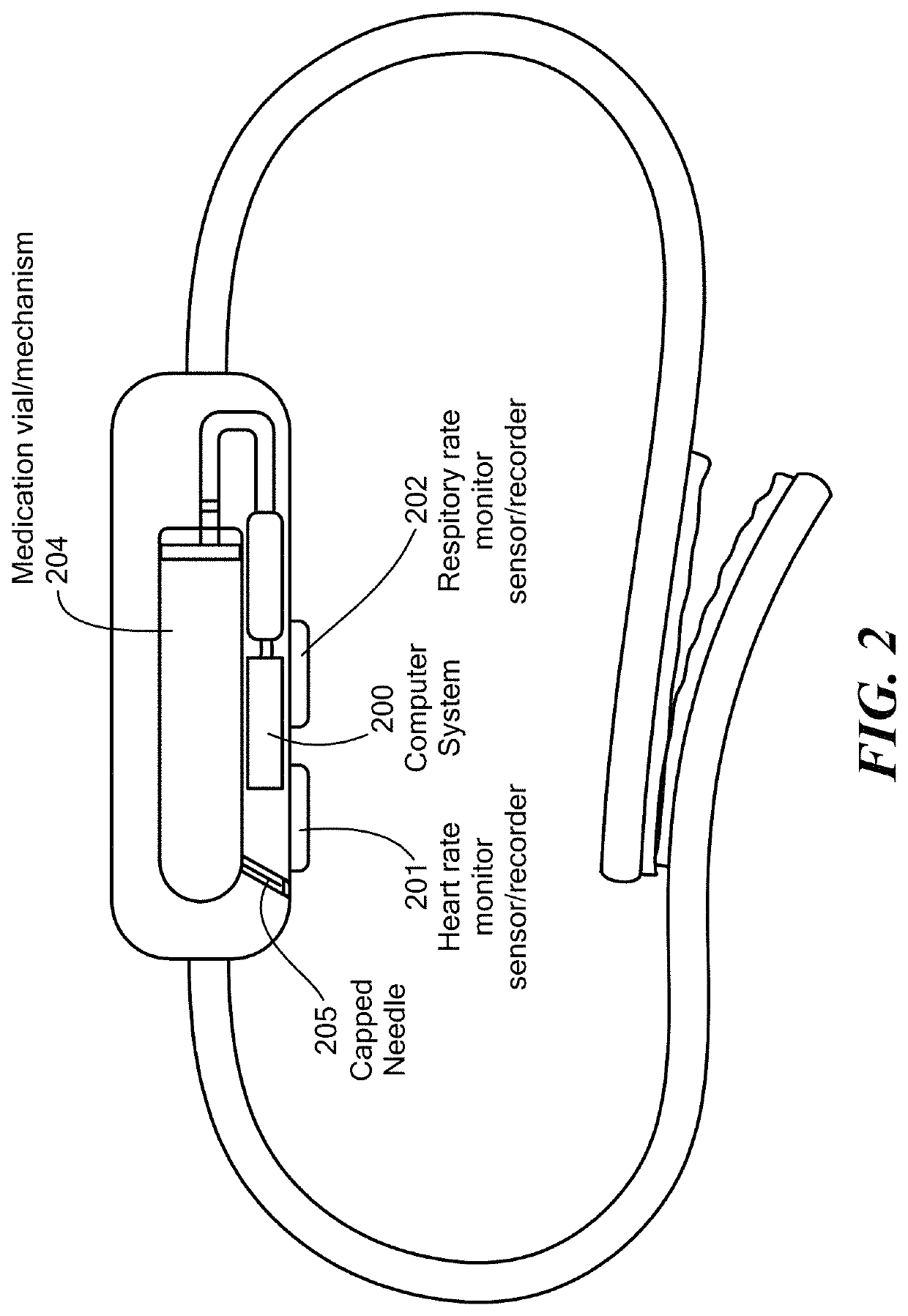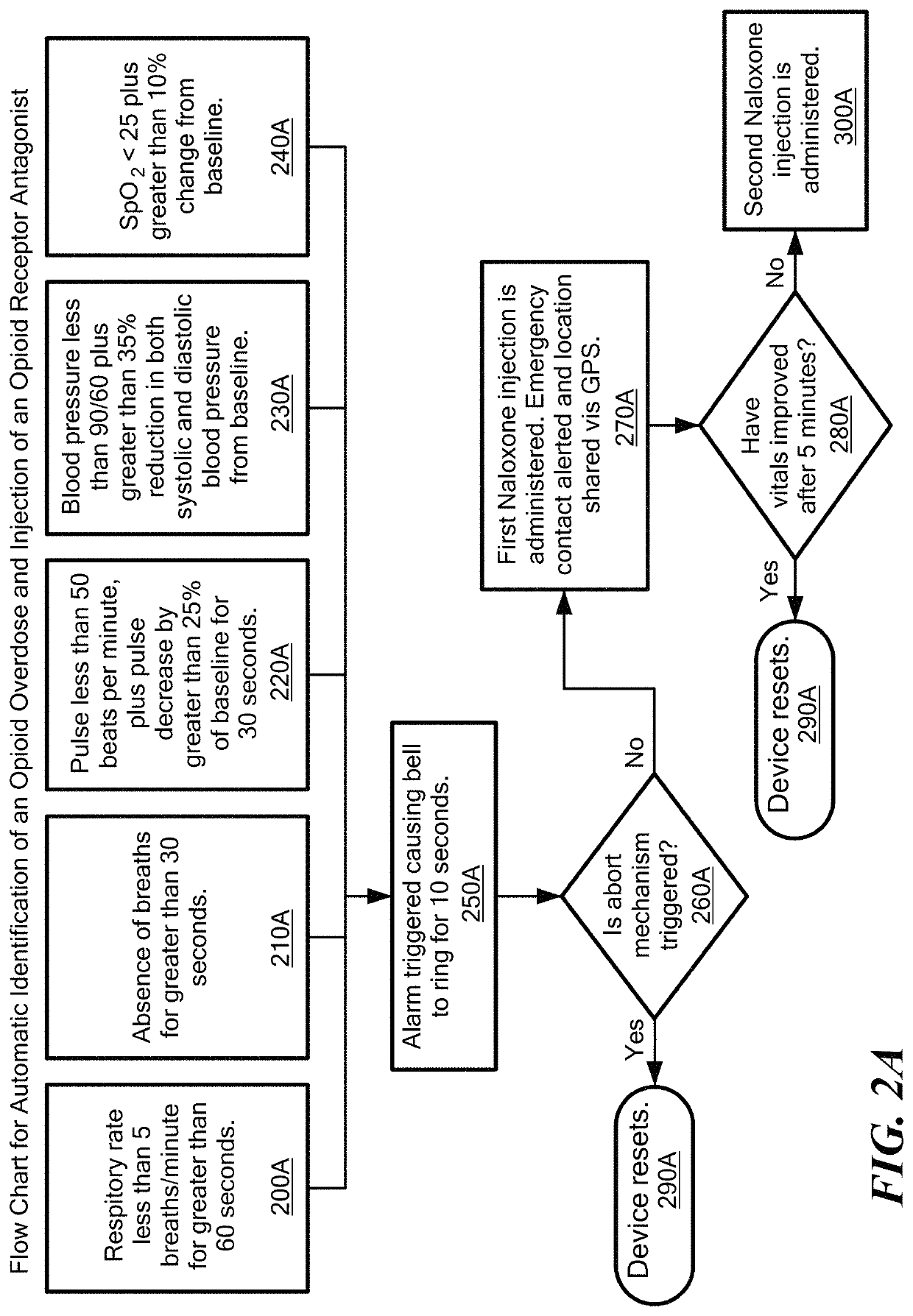[0004]Exemplary embodiments of the present technology are directed to a method for detecting the need for and providing assistance to an individual suspected of overdosing on an opiate. The method includes measuring one or more physiological parameters of the individual and transmitting an alert if the parameters were to cross a threshold and put the individual in danger. Also included is a device that may be used to carry out the method. The device carries naloxone or other opioid receptor antagonist and is able to administer it at the first signs of overdose. Although reference will be made to naloxone in the description of embodiments of the invention, it should be recognized that the invention is not limited to naloxone and that other opioid receptor antagonists may be substituted without deviating from the intended scope of the invention. By monitoring vital signs of the individual, the device causes an opioid overdose to trigger a cascade of events that leading to a call for help and optionally administration of naloxone and the reversal of the overdose, thus saving the person's life. The device can be worn as a bracelet, anklet, skin patch, or even be inserted into the body thereby allowing constant monitoring of vital signs. The device can be worn also as a ring on a finger, or even attached to a tooth. By monitoring either one or a combination of respiratory rate, heart rate, and / or blood pressure, the device can recognize an overdose, and respond effectively.
[0007]In embodiments of the invention, when an overdose is recognized, the device responds with an alarm lasting for a short duration (about 20 seconds). This alarm which may comprise a loud sound and / or vibration and / or flashing screen on the device or on a smart phone screen in communication with the device, for example, through a bluetooth connection, allows for the conscious individual to abort the imminent naloxone administration in the event of an unlikely error. The abort option requires the individual to push a switch on one side, and then simultaneously push a switch on another side, e.g., the opposite side or press the flashing screen for a duration of greater than 5-10 seconds. This permits the conscious individual to easily abort the naloxone cascade should it be unwanted, but also prevents inadvertent abortion of the lifesaving injection when it is needed.
[0009]One manner in which the device may be worn is via a bracelet or anklet. Recent advances in technology have allowed for respiratory rate to be monitored from the extremities such as via a pulse oximeter. A bracelet that monitors respiratory rate, SpO2 and heart rate makes it simple for individuals to receive and wear the device while still benefiting from the life-saving properties and advantages gained over the other previously mentioned naloxone devices. The device is ideally be worn at all times by the individual and should therefore is resistant to water and other elements to the best degree possible. Individuals may need to have clinicians install and remove the device, and may have to follow up periodically to have battery or parts checked and / or naloxone refilled. Individuals will be able to clearly tell that the device had discharged, and thus be aware of the need to report to the nearest emergency room where they could receive further treatment. Following the discharge of the device, individuals will be advised to follow up with their doctors and / or pharmacist who could inspect and either exchange or refill their device as needed. Individuals may also use the device intermittently, i.e, wear it shortly before use of opioid for a period of 4-6 hr.
[0010]Other potential forms of the device includes a patch on the skin that both monitors the vital signs and allows for the naloxone administration, or even an implantable device in the body though this would be more invasive. The patch may be worn on the skin and contain many of the same constituents as the bracelet or anklet including a vial (or two) of naloxone, a monitor for measuring vital signs, a battery, and an actuator or pump to deliver the naloxone. The patch can measure vital signs using one of several approaches, including the use of acoustic recordings from the lungs to accurately determine an overdose. The technology has already been established for automatically injecting medication from a patch or other device, and can be accomplished by using a pump propulsion or electrical motor mechanism to move the medication and needle into the tissues. A device placed on the finger is be another potential form, and offers even more advantage in portability. Another form includes attachment of the device onto a tooth or the nasal septum. By placing on the nasal septum, an acoustic monitor could be best implemented for recording breaths and an atomizer could be used to administer the naloxone automatically through the nostrils rather than an injection device.
[0012]A second naloxone vial may be contained within the device or provided for insertion by the user into the device replacing a used vial. This second vial is useful in avoiding any vulnerable gaps between one opioid overdose reversal to the next while individuals wait to have their device refilled or replaced. A second vial would also be useful during an overdose given that sometimes individuals require multiple doses of naloxone.
[0013]The device includes a battery for powering the processor and providing constant monitoring of the sensors, and possibly powers the actuator. The battery preferably lasts for duration of at least a month or longer. To assist in battery life, a mechanism could be incorporated to capture energy from normal body movement and convert it to a mode usable by the device. Also, the device may include solar sensors for charging the battery.
 Login to View More
Login to View More 


